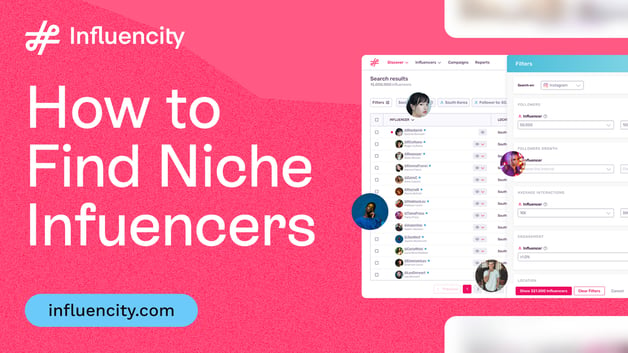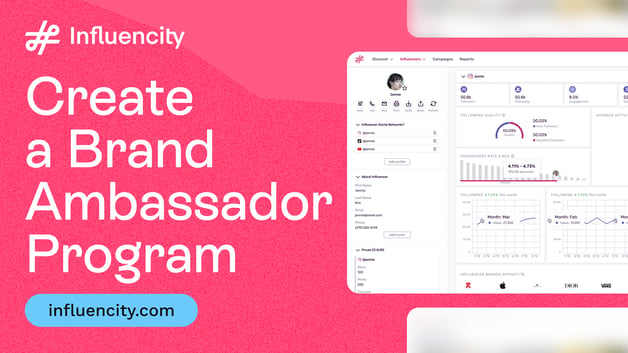Social Media
From Pantry to Post: How Legacy Food Brands Are Cooking Up Nostalgia with Today’s Top Foodie Influencers
Social Media
Campbell’s. Heinz. Kellogg’s.
They’ve been pantry staples for decades. But until recently, no one would have called them trendy.
But thanks to today’s foodie creators, these familiar names are making surprising comebacks on TikTok, YouTube Shorts, and Reels. A can of soup becomes a content series. A childhood breakfast turns into a nostalgic taste test. These old-school favorites are making more than a comeback, they’ve suddenly become relevant in a whole new way.
With the help of today’s creators, they feel less like store shelf staples and more like part of everyday life.
@ronatona.asmr Haters Only Smacking Challenge: Can you eat Kellogg's Honey Smacks Cereal without smacking #asmr #challenge #cereal #smackingchallenge #fyp ♬ original sound - RonaTona
Through ASMR cooking, nostalgic recipes, and viral snack hacks, influencers are transforming familiar names into shareable moments.
Let’s explore how traditional food brands are partnering with modern foodies to stay relevant and why that strategy is working so well.
Why Nostalgia Works on Social Media
Nostalgia sells. And food is one of the fastest ways to trigger it.
A single post can bring back the taste of school lunches, weekend breakfasts, or the soup your parents made when you were sick.That kind of memory lingers. And when creators bring it to life in short-form video, it doesn’t just entertain, it connects.
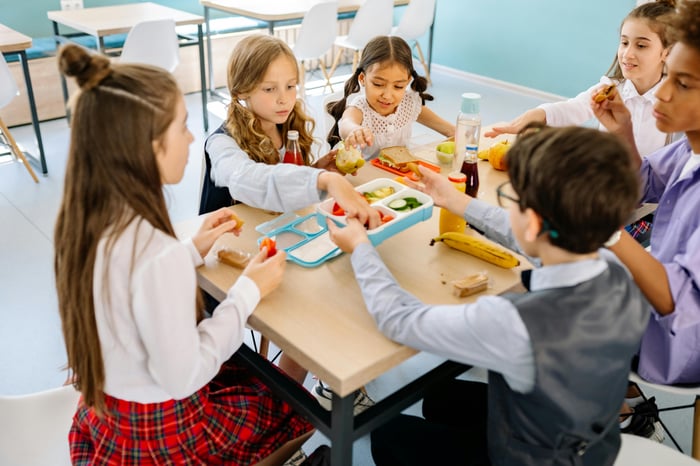
People don’t just engage with nostalgic food because it looks good. They engage because it feels good. It reminds them of who they were, or who they still are.
That’s what today’s foodie influencers are tapping into. They do so much more than just showing how to use a product. From the audience’s view, they´re actually helping viewers connect with food in a way that feels personal. A toaster pastry becomes a centerpiece dessert. A can of soup becomes a cozy ritual worth filming.
Take Justine Doiron, known online as @Justine_Snacks. She reimagined classic school snacks like Pop-Tarts into homemade, elevated recipes. Her creative takes resonated with audiences, showing how nostalgic foods can be reinvented and appreciated in a new way, even without brand involvement.
@allrecipes AD You've never had grilled cheese & @Campbell's Soup ♬ hidden beach - choppy.wav
Meet the New Foodie Creators Who Drive Cravings
Today’s most influential food voices are filming in their own kitchens, using everyday ingredients, and posting videos that make you want to stop what you're doing and cook.
@imanthenutritionist RECIPE👇 INGREDIENTS: This LEAN recipe is one of my current lunch/dinner staples. Packed with a range of micronutrients & abundant in fibre, it has helped me nourish while I heal & get back into shape during postpartum. CRISPY CHICKPEAS & HOT HONEY HALLOUMI SALAD For the crispy chickpeas: -400g can chickpeas, drained -1/2 teaspoon sweet paprika or taste -1/2 teaspoon garlic powder or to taste -Sea salt, to taste For the honey halloumi: -1 tablespoon olive oil -250g halloumi, diced -1 tablespoon honey -chilli flakes, to taste Rest of the salad ingredients: -4 handfuls spinach, roughly chopped - 2 cups finely diced cucumber -1 avocado, roughly chopped -1/4 red onion, finely diced, soaked in water (to get rid off the pungent taste) -1/2 cup pomegranate seeds -small bunch mint leaves & parsley sprigs , finely chopped For the dressing: -2 tablespoons EVOO -juice of 1/2 lemon or to taste -black pepper & sea salt, to taste (be careful with salt as halloumi tends to be salty) -1 teaspoon tahini or to taste -Stevia, to taste (for sweetness/ optional) METHOD: 1. Cover the chickpeas in the sweet paprika & garlic powder, add sea salt to taste. Toss until well covered & bake in the oven or air fryer for 15mins on 200°C 2. Fry the halloumi in a heated non-stick pan until slightly brown, then pour in the honey & sprinkle on the chilli flakes. Fry until a little more golden & crispy. Use medium to high heat! 3. Mix the salad ingredients together. Add the cooled down chickpeas & halloumi, pour the dressing over, mix well & enjoy Extra notes: -You can enjoy this salad as it is, or with crackers/ couscous for more energy. -I stored the salad in the fridge overnight, it tasted lovely the next day. However; halloumi does tend to get tough if not consumed straight away. If you want to avoid that just prep the rest of the salad & add the halloumi fresh before consumption. -Leafy greens tent to get soggy when stored, even though chickpeas soak a lot of water from the rest of the salad in this case. To avoid this add leafy greens before consumption or consume leftover within 24hrs. #hothoneyhalloumi #chickpeasalad #highprotein ♬ original sound - ImanTheNutritionist BSc ANutr
You’ll find them on TikTok, Instagram, and YouTube, turning simple meals into something more. It’s not just about recipes. It’s about comfort, personality, and the emotional spark that comes from watching a dish that feels like a memory.
When these creators feature classic brands, the content often feels personal. A bowl of soup becomes a cozy ritual. A packet of oatmeal becomes a nostalgic breakfast moment.
The best campaigns don’t look like ads. They feel like a friend inviting you to pull up a chair.
Here are a few foodie creators that brands are working with and why they stand out:
- @The_PastaQueen (4M followers)
Italian comfort food meets high-drama editing. Think bold sauces, rich lighting, and a voiceover that feels like a love letter to carbs.
@the_pastaqueen Guys this is NOT a joke. One of my proudest moments and I want to share it with you. The Pasta Queen Show is streaming NOW on @Prime Video ♬ Vivaldi - 3 Violins in F major Allegro 10 - AllMusicGallery
- @mymessykitchen (36.4K followers)
Nostalgic, approachable bakes with playful twists. Comfort food desserts made fun, easy, and irresistibly craveable.
@mymessykitchennn Looking for something delicious to make this week? Check out my cookie recipes 🍪 link: https://mymessykitchenn.com/category/cookies/ or search cookies on my website to find the recipe! #baking #cookies #mymessykitchen #foodblogger #easyrecipe #cookie ♬ did i tell u that i miss u - adore
- @EmilyMariko (14.4M followers)
Minimalism with emotional pull. Her salmon rice bowl went viral for a reason. It’s simple, intimate, and mesmerizing.
- @SaltToTaste (4.3M followers)
Slow pacing, smooth narration, and the kind of brown butter content that draws you in and keeps you watching.
@emilyzugay how to make salt taste better yum
♬ original sound - EmilyZugay
- @chefboybonez (7.8M followers)
Big flavor meets big personality. His comedic pantry content often features Heinz products, and his audience eats it up.
@chefboybonez CORN ONNA COB 👀
♬ original sound - CHEFFY
These foodie creators are building trust through food, one story at a time.
@quaker Recreating this viral chocolate bar recipe just felt rice. #pistachiochocolate ♬ original sound - Quaker Oats
Legacy Brands Are Staying Relevant by Teaming Up with Modern Creators
Rather than rerunning old ads or leaning solely on nostalgia, classic brands are inviting today’s influencers to reimagine classic products for a new generation. The result is short-form content that’s entertaining, emotionally resonant, and easy to share.
Take Campbell’s #ASoupADay. The brand encouraged creators to experiment with new soup recipes, many of them inspired by vintage cookbooks or childhood meals. It was a smart way to drive product use without scripting every post.
@samanthabauchmann #Campbellspartner Soup SZN is upon us ya'll! Today I'm sharing our absolute fav as a family for a quick meal on busy weeknights OR a cozy comfort meal on the weekends – @Campbell's Soup Spicy Tomato Soup paired with grilled cheese pull apart sandwiches! There are so many ways to make a grilled cheese, but only one soup that pairs perfectly with it - and that's Campbell's® Soup! Recipe below! #tomatosoup #grilledcheese #theperfectpair ♬ 1901 - Instrumental - Phoenix
Heinz got in on the trend too, turning the charcuterie craze into something a little messier with its TikTok “Ketchup Board.” The idea was playful. The execution leaned fully Gen Z—fries, sliders, and creative ketchup swirls on a wooden board.
@annaroisman there's a new board in town😍 #ketchup #ketchupboard #butterboard #tiktokfood #viral #comedу ♬ Harry Potter - The Intermezzo Orchestra
Then there’s Quaker’s #BreakfastRewind, which asked creators to show what they ate growing up versus what’s on their breakfast table now. The campaign blended humor, nostalgia, and practical recipes. Plus it brought oatmeal back into the spotlight for a younger crowd.
@_emilysworld The THICK overnight blended oat recipe you need in your life 🤌🏼 ✨ 🥣 RECIPE BELOW !!!!! You will need 👇🏼 🥣@quakeroatsuk Protein Oats - peanut butter flavour 🍓8-10 strawberries 🥄 125g of yoghurt 🥛 2 Tbsp milk ( I used almond milk) To serve: 🍓Strawberries 🥜 Peanut Butter HOW TO👇🏼 Assemble as demonstrated in the video <3 SUBSTITUTIONS 👇🏼 Leave a comment bellow if you need any! Perfect for busy mornings and meal prep, this easy blended overnight oat recipe is DELISHHHHious! High protein, naturally releases energy. You guys love my previous THICCCC oat recipe so here is a new one for you to enjoy! Make sure you're following @_emilysworld for new recipes EVERY MONDAY 😁🫂💙 #EmilysWorld #QuakerProtein #ProteinLikeAPro #QuakerOats . . #OvernightOats #ThickOats #HealthyBreakfast #NoProteinPowder #NoBanana #OatRecipe #HealthyRecipes #EasyRecipes #YummyBreakfast #BreakfastIdeas #Foodie #RecipeInspiration #OatsLover #ChiaSeeds #HealthyEating #AlmondMilk #nutritionist #foodfreedom #BreakfastGoals #RecipeShare ♬ Bed Chem - Sabrina Carpenter
None of these ideas felt forced. They worked because they gave creators freedom to be themselves while tying the content back to something everyone recognizes: the foods we grew up on.
@macy.blackwell Hot Dog Flag Board!🌭🇺🇸You look like the 4th of July... So fun and cute for all the summer festivities coming up! Memorial Day weekend gatherings and 4th of July! What you need: - hot dogs - buns - ketchup - blue tortilla chips - white cheddar cut into stars - #redwhiteandblue #summerfood #mdw #4thofjuly #patriotic #usa ♬ original sound - MGM Studios - Amazon MGM Studios
Picking the Right Platform for Flavor and Feel
Not all food content belongs in the same container.
The best-performing campaigns take time to match the message to the medium. What works on TikTok might fall flat on Reels. A moody YouTube Short won’t always translate to Instagram. The key is knowing where each type of food storytelling thrives.
.png?width=700&height=525&name=White%20%26%20Green%20Modern%20Bar%20Chart%20Graph%20(1).png)
TikTok is where quick hits win. Fast cuts, bold text, and unexpected ingredients grab attention quickly. Think recipe hacks, transformations, and before-and-after shots. It’s a place to surprise and delight.
Instagram Reels lends itself to visual polish. Multi-slide carousels with close-ups of each step. Behind-the-scenes kitchen prep. Aesthetic plating. It’s more about process than punchline.
YouTube Shorts offers space for storytelling. There’s room to build a vibe, explain the history of a dish, or contrast “then vs. now” moments. Food brands looking to anchor nostalgia often find success on YouTube.
One creator might use all three, but the smart ones tailor their content. And the smartest brands make sure their campaigns do the same.
@heresyourbite Cheesy Chicken Broccoli Rice Casserole ❤️🔥 Made with @knorr Cheddar Broccoli Rice #KnorrPartner Here's how to make it: 2 packages Knorr ® Rice Sides™ - Cheddar Broccoli 1 lb chicken breasts Olive oil Salt and pepper, to taste 1 tsp onion powder 1 tsp garlic powder 1 tsp smoked paprika 3-4 cups broccoli florets, steamed or roasted (see note) 4 oz pancetta (optional) 2 tbsp butter ½ onion, finely diced 4 cloves garlic, minced 2 tbsp flour ½ cup dry white wine (optional) 1 cup chicken broth made with Knorr chicken bouillon 1 cup milk (or half-and-half), room temp 1 tsp Maille Dijon mustard 1 tsp Worcestershire sauce 1/4 tsp cayenne pepper 8 oz freshly shredded cheddar cheese 1/2 cup sour cream, room temp 1/2 cup panko breadcrumbs (optional) 2 tbsp butter, melted (for panko topping) Fresh chives, finely chopped (for garnish) 1. Add the pancetta to a cold pan. Turn the heat to medium and cook until crispy. Drain on a paper towel and set aside, leaving the leftover grease in the pan. 2. Season the chicken breasts with salt, pepper, garlic powder, onion powder, and smoked paprika. Add a touch of olive oil to the pan, if needed. Cook the chicken for 5-6 minutes per side, or until fully cooked. Let rest, then shred and set aside. 3. Steam the broccoli until tender. Set aside. *Note: Roasting the broccoli: Toss broccoli florets with olive oil, salt, and pepper. Roast at 425°F for 15-20 minutes, until slightly charred. 4. Cook both packages of Knorr ® Rice Sides™ - Cheddar Broccoli according to the package instructions and set aside. 5. Preheat the oven to 350F 6. In the same pan, melt 2 tbsp butter and add the diced onion. Sauté for 2-3 minutes, until softened. Add the minced garlic and cook for 30 seconds, until fragrant. 7. Whisk in the flour and cook for 1-2 minutes. 8. Deglaze the pan with white wine, scraping up and brown bits on the bottom of the pan. Let that cook for another 1-2 minutes. 9. Slowly add the Knorr chicken broth, whisking constantly to avoid lumps, then stir in the room temp milk. Add Dijon mustard, Worcestershire sauce, cayenne pepper, and salt and pepper to taste. Cook for 3-5 minutes, until thickened. Remove from heat. 10. In a large mixing bowl, combine the cooked rice, shredded chicken, broccoli, pancetta, creamy base, sour cream, and half the shredded cheddar cheese. Mix until evenly combined. 11. Pour the mixture into a greased 9x13-inch baking dish and smooth the top. Sprinkle over the remaining cheddar cheese. 12. Combine panko breadcrumbs with melted butter. Sprinkle over the casserole (optional). 13. Bake uncovered for 25-30 minutes, or until bubbly and golden on top. 14. Garnish with freshly chopped chives and enjoy! #casserole #dinner #dinnerideas #easydinner #easydinnerideas #easyrecipes #weeknightdinner #weeknightmeals #broccolicheddar ♬ Intergalactic Janet - Ley Soul
What Actually Works: Campaign Tactics That Move the Needle
The best posts mix creativity and storytelling in a way that makes them memorable and worth sharing.
Here’s what I’ve seen work:
- Start with a feeling. Instead of pushing a product, start with a story. “Grandma’s soup, with a twist” lands better than “Buy now.”
@everything_delish #ad The holidays are here and so is my grandmother's famous soup! Now, I am putting my twist on it by adding in turkey, which makes it extra delish! We all know that it's not the holidays without turkey on the table and you can even use your turkey leftovers to make this dish - since we all know that turkey makes for the best leftovers. I love making this soup for the holidays since it feeds a large crowd and is super simple to make. Make sure to visit http://ThinkTurkey.ca for turkey recipes and more! Find the recipe below, enjoy xx #ThinkTurkey ♬ original sound - Jamie Milne
- Invite participation. Branded hashtag challenges still have power when they’re open-ended and fun to remix. Let the creator take the lead.
@batuchaan #PlayWithPringles don't stop, don't stop 😝 #Anzeige#PlayWithPringles ♬ Don't Stop Don't Stop - Paul Leary, Nait Masuku
- Show the process, not just the plate. Viewers want to see how it came together. Even the mess can be part of the magic.
@juanbigbite Who else is a certiFRIED chicken lover? It's best served with a dip 😋 @heinzphilippines #Heinz #Ketchup #TomatoFirst #JuanBigBite #flavoursdemayo #recipe #foodieph ♬ Rather Be Clean Bandit x Jess Glynne Sped Up - Stan :)
- Embed the product naturally. Whether it’s a cereal box on the counter or a sauce in a pantry haul, subtle placement feels real.
@steph_luck Elevating breakfast!! Kellogg's new Chocco's are here & they are here to stay in this house hold. #ad #Chocos #deliciouslyholesome #familyvlog ♬ original sound - Steph Houghton
- Offer something extra. Promo codes, product bundles, or downloadable recipe cards can turn a viewer into a customer.
@brooke_lynnmilne we got a code ladies & gentleman!!!! @lemme ♬ original sound - Brooke Lynn
Conclusion: From Comfort Food to Cultural Currency
Food has always been emotional. Now it’s viral too.
By leaning into nostalgia and teaming up with creators who understand how to tell a great story, classic brands are finding new ways to matter. They’re not just showing up in kitchens. They’re showing up in culture.
For marketers, the takeaway is simple: You don’t have to reinvent the pantry. You just need the right partner to reintroduce it with heart, humor, and a little creative seasoning.
Tags:
Foodie Influencers
Lynne Clement
Lynne Clement knows influencer marketing from every angle, having worked across agencies, brands, and platforms for nearly 20 years. Her insights come from marketing experience at Procter & Gamble, leading marketing strategy and execution at a top influencer agency, and working inside an influencer platform. During...





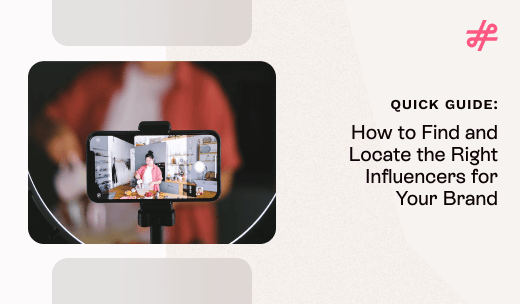





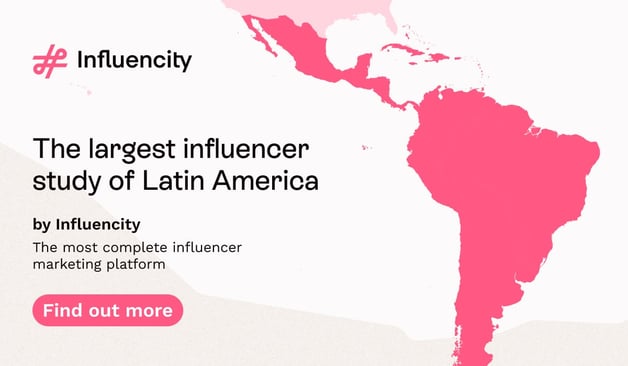









%20and%20How%20Can%20They%20Benefit%20Your%20Brand%20article.jpg?length=628&name=What%20Are%20Key%20Opinion%20Leaders%20(KOL)%20and%20How%20Can%20They%20Benefit%20Your%20Brand%20article.jpg)
